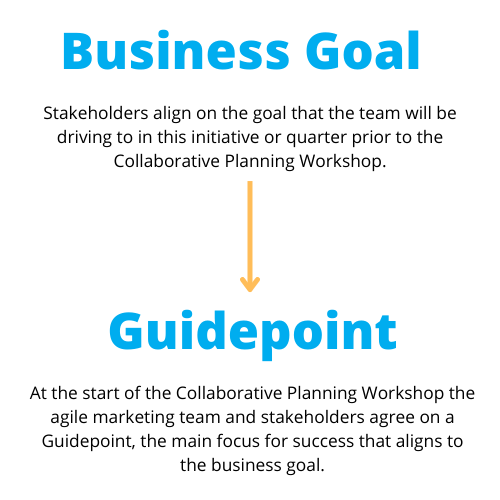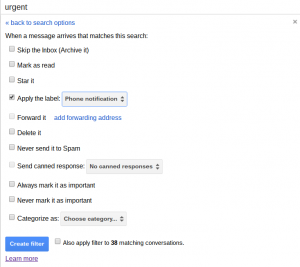The Guidepoint is the connective tissue that rolls upward and downward in the organization.
We recently introduced you to Agile Marketing Navigator, a flexible framework for navigating agile marketing for marketers, by marketers. We also held a Zoom meeting to discuss the Navigator with members of the agile marketing community.
The Navigator has four major components: Collaborative Planning Workshop, Launch Cycle, Key Practices and Roles. Within these categories, there are several sub-pieces for implementation. Over the next several weeks, we’ll dive into each piece and give you practical, actionable ways to use them at your company.
The collaborative planning workshop
To begin with, we’ll start at the top with the Collaborative Planning Workshop. The Collaborative Planning Workshop brings alignment to what the team is trying to achieve and empowers marketers to focus on customer value and business outcomes over activity and outputs. This session should happen quarterly or at the start of any large campaign or initiative.
Where most agile frameworks begin with the backlog of work for the team, we found it very important to start at a higher level and ensure alignment is happening between the agile marketing team and the key stakeholders asking for work from the team.
One of the biggest challenges we’re addressing with the Collaborative Planning Workshop is the disconnect between the stakeholders who ask for work and the team on the hook for delivery. Way too often, the people setting the marketing strategy and the designers, copywriters, social media specialists and others don’t have a seat at the adult table. Work comes to them in the form of the creative brief via an electronic system, but there’s no conversation. They aren’t being treated like marketers but rather as producers of output.
The Collaborative Planning Workshop is just what it says—a collaborative conversation where everyone is on an equal playing field and striving towards successful outcomes.
The Guidepoint
This framework begins with everyone understanding the actual business reasons for success and alignment on a Guidepoint. Here’s how we define the Guidepoint in the Agile Marketing Navigator:
“The Guidepoint helps the team and stakeholders navigate what success looks like for an upcoming campaign or project. Stakeholders come to the workshop with a business goal for the organization. During the workshop, the group comes up with a short written description, called a Guidepoint, of what success looks like for this marketing initiative and how it aligns to the organization’s goals.”
The Guidepoint is the connective tissue that rolls upward and downward in the organization. It’s often the forgotten middle layer between what the stakeholder is on the hook for and the tactics executed by the marketing team to achieve success.

The Guidepoint aligns the agile marketing team and stakeholders on a shared purpose and creates a focus on the team’s outcomes. It also helps with prioritization, so work that’s not aligned gets a lower priority or isn’t done at all.
Here are a few example scenarios to get you started:
Industry: Healthcare
Business Goal: Acquire an additional 5,000 new patients during the first year after the grand opening of our new hospital.
Guidepoint: Create a campaign targeting elective surgery candidates that generates 1,500 leads that ultimately generate a higher than average conversion rate than the industry average.
Industry: Retail
Business Goal: Increase cart checkout dollar amounts by 10 percent over last year.
Guidepoint: Launch a campaign targeting suggestive add-on purchases, moving the average cart checkout price to $ 50.
Industry: Financial Services
Business Goal: Generate a 25% increase in our personal finance app downloads in 2022.
Guidepoint: Generate an average of 50 new downloads apps with an activation rate of 25%.
Ideally, you have an agile marketing team formed with a straight line to a stakeholder and business goals that need to be achieved, which makes it pretty easy to focus on a single Guidepoint at a time.
However, many marketing teams haven’t streamlined this way and must support multiple lines of business at once. In those cases, we suggest no more than three Guidepoints at once for the team, or they’ll quickly lose focus. If this becomes problematic, the marketing owner on the team will need to work with key leaders to determine the most important business goals for the organization and prioritize them accordingly. Some teams have had great success determining percentages of time each stakeholder gets based on the business value of their line of business.
We can only succeed for a clear, focused outlook on what success looks like for the marketing team and the organization as a whole.
The post Getting started with the Agile Marketing Navigator: Aligning on a Guidepoint appeared first on MarTech.
(36)






